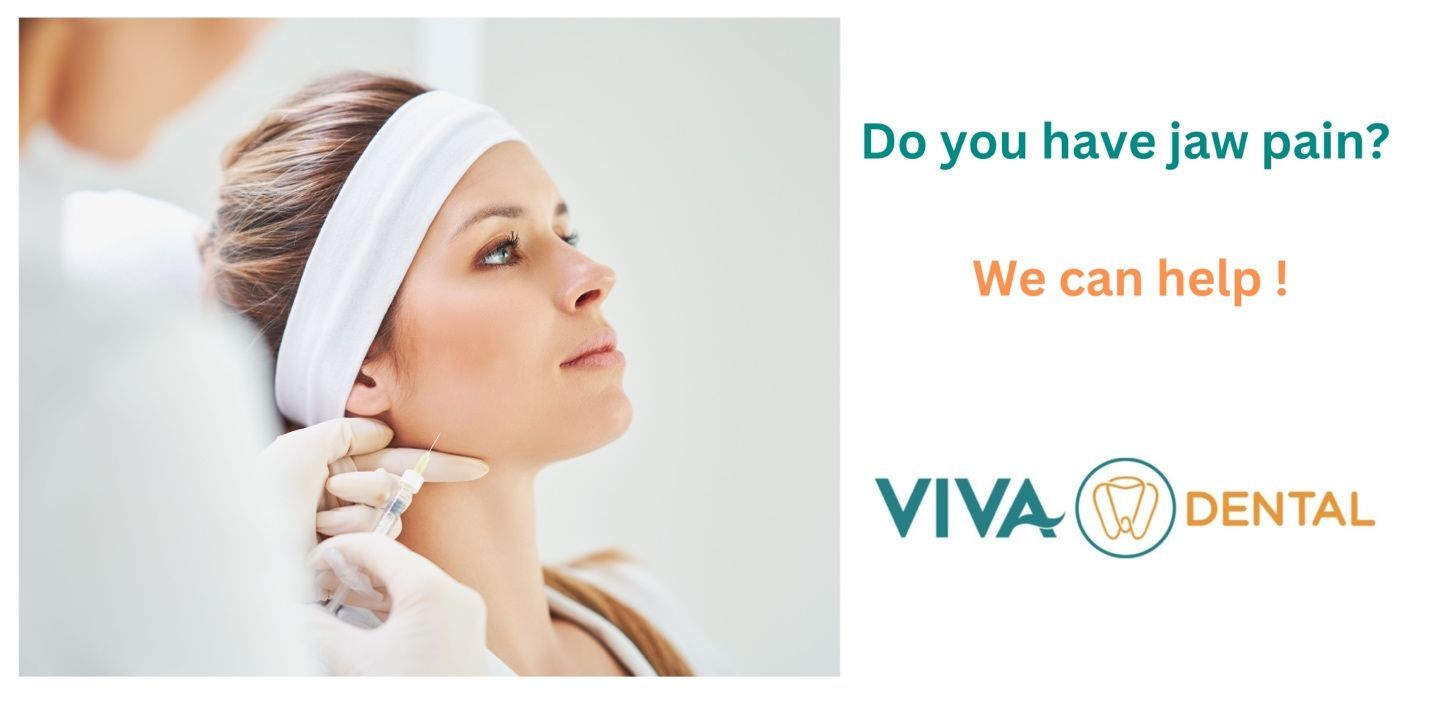
Botox
Botox for TMJ Disorder: How Does It Work?
Do you clench or grind? Do you have a night guard, and it has not been helping as much ? Have you tried acupuncture, dry needling , massage and have no good results ?
But Have you heard of therapeutic Botox® for facial pain, headaches, and even temporomandibular (TMJ) disorders?
Botox for TMJ disorder may relieve common symptoms, such as teeth clenching and headaches.
How does Botox work?
Botox® reduces the activity of facial muscles.
Typically, it’s used for cosmetic purposes, minimizes the appearance of:
- Wrinkles
- Aging lines around the eyes or forehead
- Frown lines
Botox® can also be used for therapeutic purposes.
Since its primary function is to relax facial muscles, it can help relieve pain from tight jaws and other facial muscles that cause tension and headaches.
Does Botox work for TMJ disorders (TMD)?
When you have TMJ disorder, you may experience:
- Sore cheeks and jaw
- Teeth clenching or grinding
- Neck and shoulder pain
- Tension headaches
In patients suffering from TMJ disorder symptoms, Botox® helps relax tense jaw muscles and alleviate pain.
It’s typically recommended as a complementary treatment to other TMJ disorder therapy, but Botox may be all you need for certain symptoms!
Does Botox for TMJ disorder change face shape?
Botox® for TMJ disorder may change your face . When your jaw muscles are tensed and overworked, it may cause your face to look wider.
Botox® helps to lessen the appearance of your jaw muscles and simultaneously alleviate pain from clenching!
In turn, it slims your face and restores youthfulness.
Who should not receive Botox?
∙ are allergic to any of the ingredients in Botox® . See the end of this Medication Guide for a complete list of ingredients in Botox® .
∙ had an allergic reaction to any other botulinum toxin product such as Myobloc® , Dysport® , or Xeomin® .
∙ have a skin infection at the planned injection site.
∙ are being treated for urinary incontinence and have a urinary tract infection (UTI).
∙ are being treated for urinary incontinence and find that you cannot empty your bladder on your own (only applies to people who are not routinely catheterizing).
What are the ingredients in Botox?
Active ingredient: onabotulinumtoxinA
Inactive ingredients: human albumin and sodium chloride.
What should I tell my doctor before receiving Botox?
Tell your doctor about all your medical conditions, including if you:
∙ have a disease that affects your muscles and nerves (such as amyotrophic lateral sclerosis [ALS or Lou Gehrig's disease], myasthenia gravis or Lambert-Eaton syndrome).
∙ have allergies to any botulinum toxin product.
∙ had any side effect from any botulinum toxin product in the past.
∙ have or have had a breathing problem, such as asthma or emphysema.
∙ have or have had swallowing problems.
∙ have or have had bleeding problems.
∙ have plans to have surgery.
∙ had surgery on your face.
∙ have weakness of your forehead muscles, such as trouble raising your eyebrows.
∙ have drooping eyelids.
∙ have any other change in the way your face normally looks.
∙ have symptoms of a urinary tract infection (UTI) and are being treated for urinary incontinence. Symptoms of a urinary tract infection may include pain or burning with urination, frequent urination, or fever.
∙ have problems emptying your bladder on your own and are being treated for urinary incontinence.
∙ are pregnant or plan to become pregnant. It is not known if Botox® can harm your unborn baby.
∙ are breastfeeding or plan to breastfeed. It is not known if Botox® passes into breast milk.
∙ have received any other botulinum toxin product in the last four months.
∙ have received injections of botulinum toxin, such as Myobloc® (rimabotulinumtoxinB), Dysport® (abobotulinumtoxinA), or Xeomin® (incobotulinumtoxinA) in the past.
Be sure your doctor knows exactly which product you received.
∙ have recently received an antibiotic by injection.
∙ take muscle relaxants.
∙ take an allergy or cold medicine.
∙ take a sleep medicine.
∙ take anti-platelets (aspirin-like products) or anti-coagulants (blood thinners).
Is Botox for TMJ disorder covered by insurance?
Typically, Botox® is not covered by insurance.
How much is the treatment?
The cost of Botox® varies from patient to patient as it depends on:
How many units of Botox® you need
Cost per unit
Provider’s time
Schedule a consultation with us now to learn more.
Where can I get Botox for TMJ disorder near me?
Viva dental Victoria is proud to offer Botox® treatments for both cosmetic and therapeutic purposes.
Our dentist maintains the highest levels of accreditation and ongoing education to ensure your treatments are effective and stress-free. Dr Al-Mosuli is trained and certified by PTIFA institute.
Ready to relieve your TMD symptoms?
Call us at 250- 361-8181 or
Email us at info@vivadentalvictoria.com
We’re conveniently located in 1105 Fort Street , Victoria , BC, V8V 3K9 and happily welcome patients from all over Vancouver island.
